Apple Music vs Spotify: which music streaming service is better?
We put Apple Music and Spotify head-to-head

The music world has always been about rivalries. There’s Taylor Swift vs Kanye West, Tupac vs Biggie, Eminem vs... everyone? The rise of music streaming services over the last decade means you can add a new rivalry to the mix: Apple Music vs Spotify.
Today’s best music streaming services don’t just include Apple Music and Spotify. But, for most people, the choice comes down to these two contenders. The Swedish-born Spotify, with its freemium music model and Apple Music, the replacement to iTunes with exclusive albums and a monstrous 90 million song library.
Although up-to-date user numbers aren’t often revealed, Spotify certainly appears to have an advantage with a larger user base – it has around 354 million users globally last time we checked. That’s despite mounting competition from Apple Music and Jay-Z-owned Tidal.
Spotify has one significant advantage over many of its rivals: it doesn’t ask for any money upfront. Thanks to its ad-supported entry-level tier, you can go for years without ever paying a dime. Sure, Apple may offer a free trial, but you’re going to need to pay at some point.
But Apple Music has become an even more serious contender in 2021 thanks to the introduction of Spatial Audio and Lossless. These are two new formats that will radically change your favorite songs sound. Read our Apple Music Spatial Audio and Lossless guide to find out how to turn them on.
Spotify plans to launch Spotify HiFi to compete in this area, but it’s still not landed yet. The ongoing Joe Rogan controversy may have delayed this feature while it fights to keep artists on the platform.
So which service should you invest your entertainment budget in? We recommend you read our in-depth Spotify review and Apple Music review to be sure. But if you’re short on time, we’ve broken down the pros and cons of each service below to help you pick the right one for you.
Sign up for breaking news, reviews, opinion, top tech deals, and more.
Apple Music
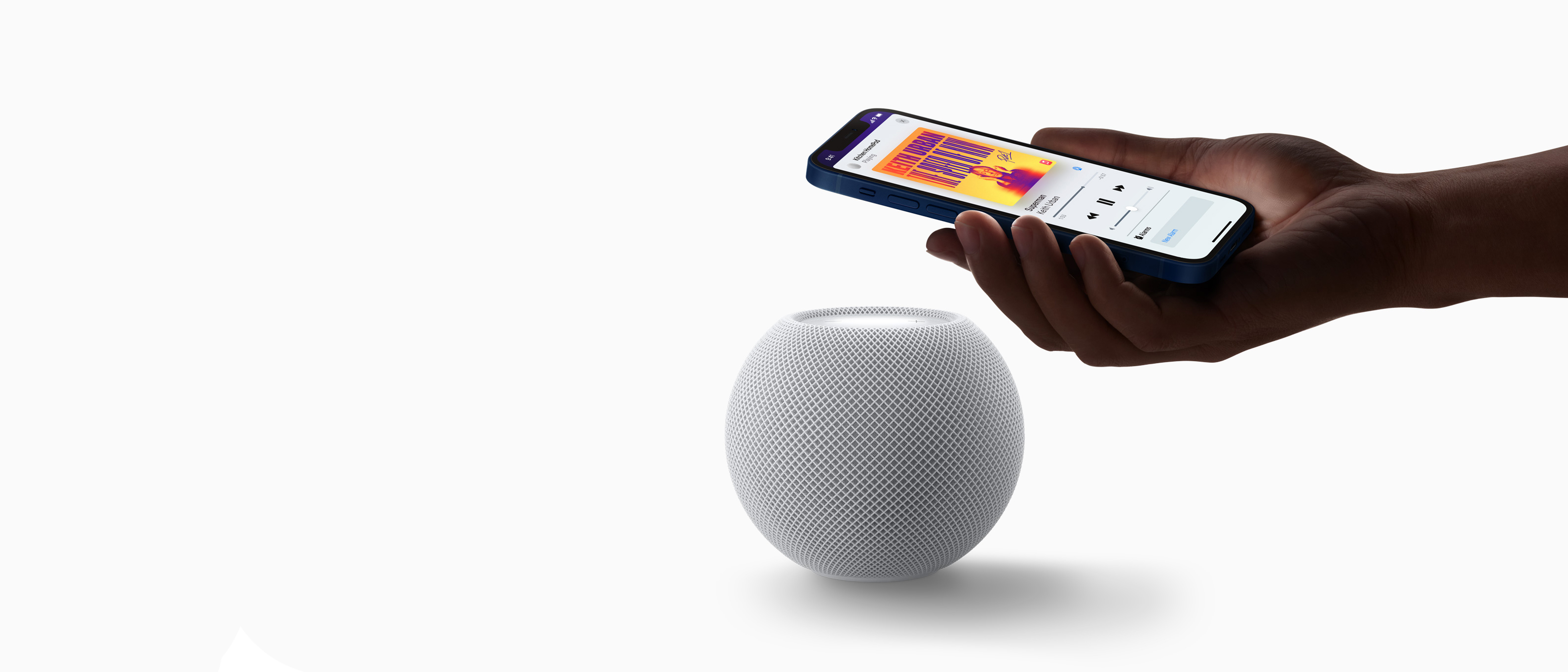
How big is its music library?
Apple Music has a massive library of tracks that's at about 90 million last time we checked, across a broad range of genres. So if you’re into French skiffle or Brazilian electro-pop and struggle to find obscure artists, there’s a great chance Apple Music will have you covered.
Plus, this being an Apple product, its interface is easy to navigate both on a Mac/PC and in more portable forms such as a smartphone or tablet, and you can download tracks to take them with you when you’re away from a Wi-Fi connection. It’s a feature Apple Music shares with Spotify, but it’s vital if you want to keep users signing up to the paid version.
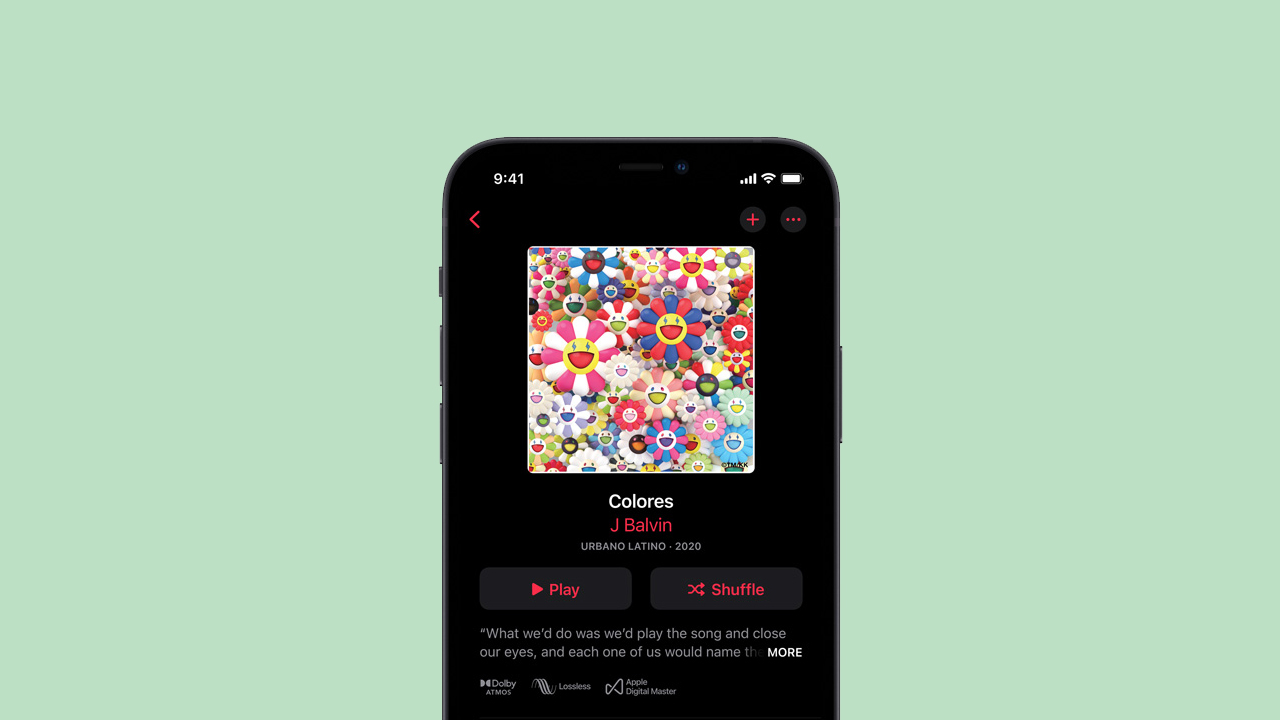
How much does it cost?
Unlike Spotify, which offers both free and paid versions, Apple Music only offers a free trial version before it requires you to sign up.
It’s understandable from a business point of view – especially with so many exclusives serving as a golden carrot for potential users – but it's possible that not having any form of long-term free-to-use version has ultimately worked against Apple’s desire to increase its overall user base.
Free trials are limiting, especially to those looking to experience the service long-term. Giving users limited access to the full experience of its service might seem like a better deal in the short term, but it suffers in the long term compared to the free/ad-filled version Spotify offers.
Still, having three different payment plans does show Apple wants its users who are willing to cough up a more dynamic approach. Having a cheaper plan aimed at students ($4.99 / £4.99 / AU$5.99) is a great deal (but not an exclusive one as Spotify offers something similar), especially as this rate still gives you access to every facet of its service. For everyone else it's $9.99 / £9.99 / AU$11.99 for an individual or $14.99 / £14.99 / AU$17.99 for a family subscription for up to six people.
Apple Music has recently added another tier, too, called Apple Music Voice which works solely with Siri for ($4.99 / £4.99 / AU$5.99). Think of this as Apple Music Lite, with access to all the same tracks and playlists but only through Siri. So you can't download anything for offline listening, can only listen on products with Siri and miss out on Spatial Audio with Dolby Atmos and Lossless, too.

What exclusive benefits does Apple Music offer?
Apple has gone to great lengths to cut Spotify and the smaller music streaming services out of the picture by signing some of the biggest names in popular music to exclusivity deals on new albums.
Apple Music has boasted exclusive album releases from Drake, Taylor Swift, Britney Spears, Frank Ocean, Future and more, and it's a strategy that's rankled Spotify over the years. Of course, if you're not a fan of the artists that initially released exclusively on Apple Music, then this feature might not be a game-changer, but if you do, then it's a serious trump card.
A newer addition to Apple Music is Spatial Audio with Dolby Atmos and Lossless Audio support. This brings an enhanced listening experience to all users. Spatial Audio makes tracks sound more immersive – like you're hearing them live. And Lossless Audio means music sounds better – you're listening to tracks at CD quality rather than compressed streaming quality.
Apple Music also offers Apple Music 1 (formerly known as Beats 1), the vanguard for a broader push towards original broadcasting on the service. It's a 24/7 radio station that offers round the clock playlists and live DJs. It's an internet radio station backed by Apple, so it's as slick as you might imagine, with the likes of former Radio 1 DJ Zane Lowe and more on its roster. With Apple already planning more stations for the service, this original broadcasting angle is a facet Spotify has no answer for.
An exclusive social feature called Connect is packed in as part of the Apple Music package. It's essentially a way for artists to link up with fans more intimately, offering access to new singles, videos, and messages.
Connect might seem like something designed for the bigger bands, but it's open to any artist, offering a service not too dissimilar to what MySpace was back in its heyday. For followers, it's simply a simple yet effective way to get a little closer to the bands you love.
Finally, there's the exclusive video content. With its integration with iTunes, the ability to browse and play tons of music videos adds a dimension Spotify simply doesn't offer. And Apple Music is doubling down on the visual side with original programs such as Carpool Karaoke: The Series (a more extended version of James Corden's celeb singing skit on The Late, Late Show) and Planet of the Apps (a Dragon's Den-esque show for app and software developers).
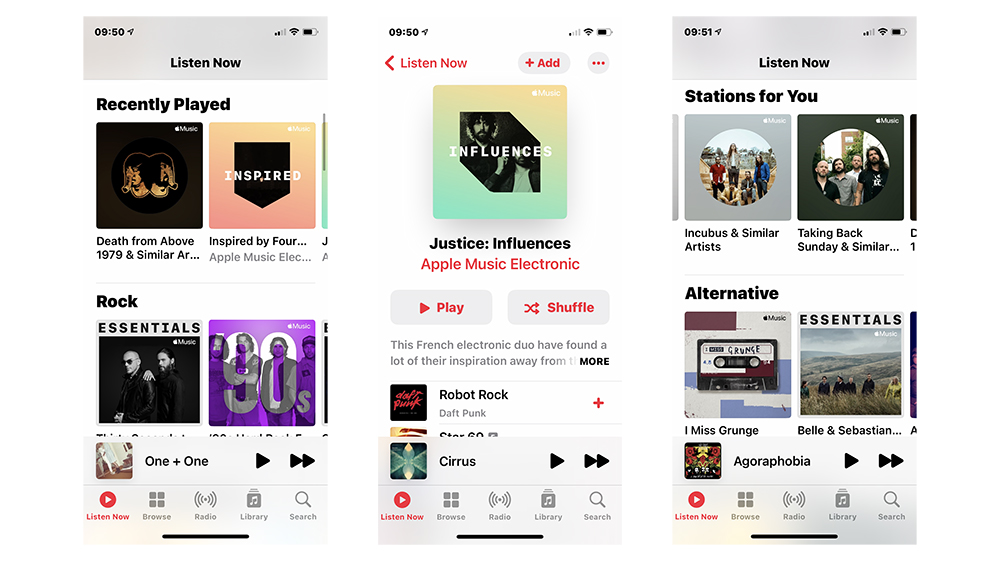
What’s it like to use?
Both the desktop and portable versions of Apple Music are great to look at (aesthetics, after all, is Apple’s thing to a tee). However, there’s a disparity in the user experience between the two. Apple Music’s Mac, PC and laptop version is superior to the one you’ll find on your phone or tablet. The continued use of larger images and boxes suits a larger screen, and it’s straightforward to navigate through your playlists, exclusives, and your imported iTunes library.
The version optimized for smartphones isn’t broken by any means, but its large icon design often makes it a little fiddly as it doesn’t use the smaller screen of a phone to its advantage.
Spotify

How big is its music library?
Spotify currently boasts more than 82 million songs and 3.2 million podcasts.
Spotify’s strong influx of tracks over the years has helped push it into the stratosphere, with a heavy focus on promoting new tracks and breakthrough artists. Curated playlists are almost always the first thing you see when you load any version of the app, with the service seemingly designing playlists for virtually every musical subgenre. These are updated constantly, so your favorite ones never grate following extended use.
Discover Weekly, the playlist based on your listening preferences, has come leaps and bounds in the last few years with the nuances of its suggestions. Although Apple’s For You playlist (introduced in 2016) now essentially offers the same feature, so it’s no longer the special boon it once was.
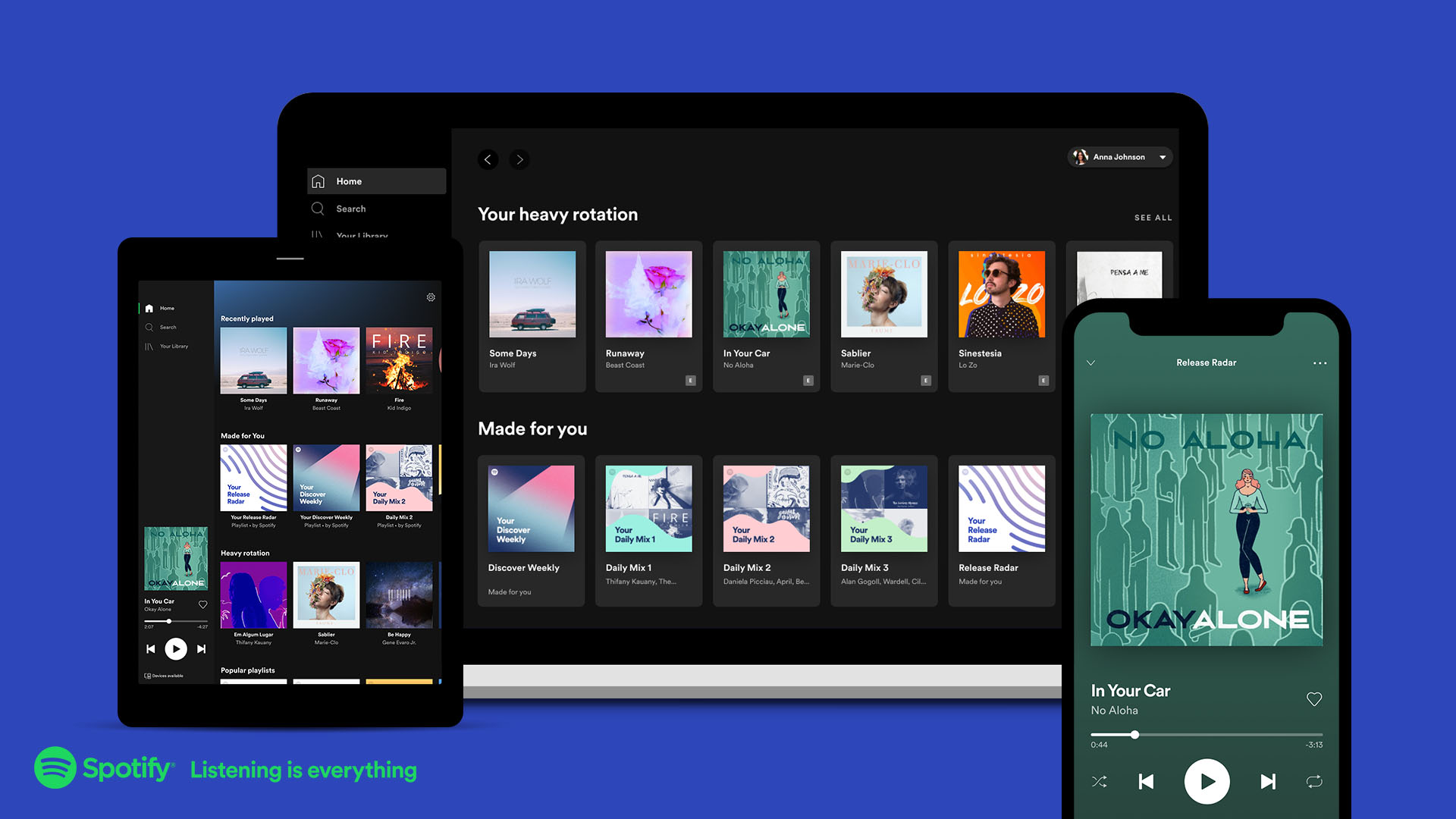
How much does it cost?
Here’s one of the main reasons why Spotify has always held Apple Music at bay – paid and unpaid access. While it’s trialed a few different versions over the years, Spotify has always come back to the basic formula that’s worked best: everyone can sign up and access every track in its catalog for free.
There are ads every few songs, but you can tailor 15 playlists that feature the songs you want. You also get access to top curated playlists like Discover Weekly. You didn’t have complete control over playback and could only skip a limited number of times per hour in the past.
It’s a business model that might seem wild on paper, but it’s the ideal way to increase your user base. The free service is good yet awkward enough to get users coughing up for Premium paid accounts.
Rather than locking content behind a paywall, Spotify wisely seals away features that make the service more dynamic. Want to listen to music without any adverts? Do you want to download as many tracks as you want to your smartphone to listen to them when away from home? Want the ability to skip songs as and when you want on your tablet/smartphone? Then it’s time for Premium.
Suppose you want everything Spotify offers, including choosing any song you like with unlimited skipping privileges and no ads. In that case, you can get a personal Spotify Premium plan for $9.99 / £9.99 / AU$11.99. In contrast, the Spotify Family Plan, which offers simultaneous listening for up to five users, is priced at $15.99 / £16.99 / AU$17.99 after a recent price hike.
Like Apple Music, Spotify also offers discounted plans for students, with total access to the Spotify library priced at only $4.99 / £5.99 / $5.99. Although, you will have to verify your enrollment status.
There’s also a subscription tier for friends, partners, or family members who live at the same address. Spotify Premium Duo allows two people to share one Spotify subscription plan while still retaining their individual Premium accounts and logins, allowing you to save on the cost without sacrificing the freedom of listening without ads and creating your own playlists.
Costing $12.99 / £13.99 / AU$15.99 per month, it’s considerably cheaper than buying two separate Premium subscriptions, which cost $9.99 / £9.99 / AU$11.99 per month each. If you share the cost with your listening buddy, you’re looking at less than $7 /£7 / AU$8 per month to get ad-free Spotify and on-demand listening to tracks in any order you want.
What exclusive features does Spotify offer?
Here’s the thing: you don’t get much that sells the exclusivity of using Spotify right now.
However, the streaming giant promotes new tracks and breakthrough artists through curated playlists like New Music Friday, acting as a launchpad for fledgling artists to break through into the big time.
Curated playlists are almost always the first thing you see when you load any version of the app, with the service seemingly designing playlists for nearly every musical sub-genre. These are updated constantly, so your favorite ones never grate following extended use.
Spotify also has a great podcast offering, which is worth trying or even using instead of your current favorite podcast app. There are even rumors that Spotify could be on the verge of launching a podcast subscription service.
Low-data mode is another extra. According to Spotify, it caches some audio for when you lose signal and uses less of your data allowance, seventy-five per cent less. Of course, if you have a Premium sub, you can download songs over Wi-Fi anyway.
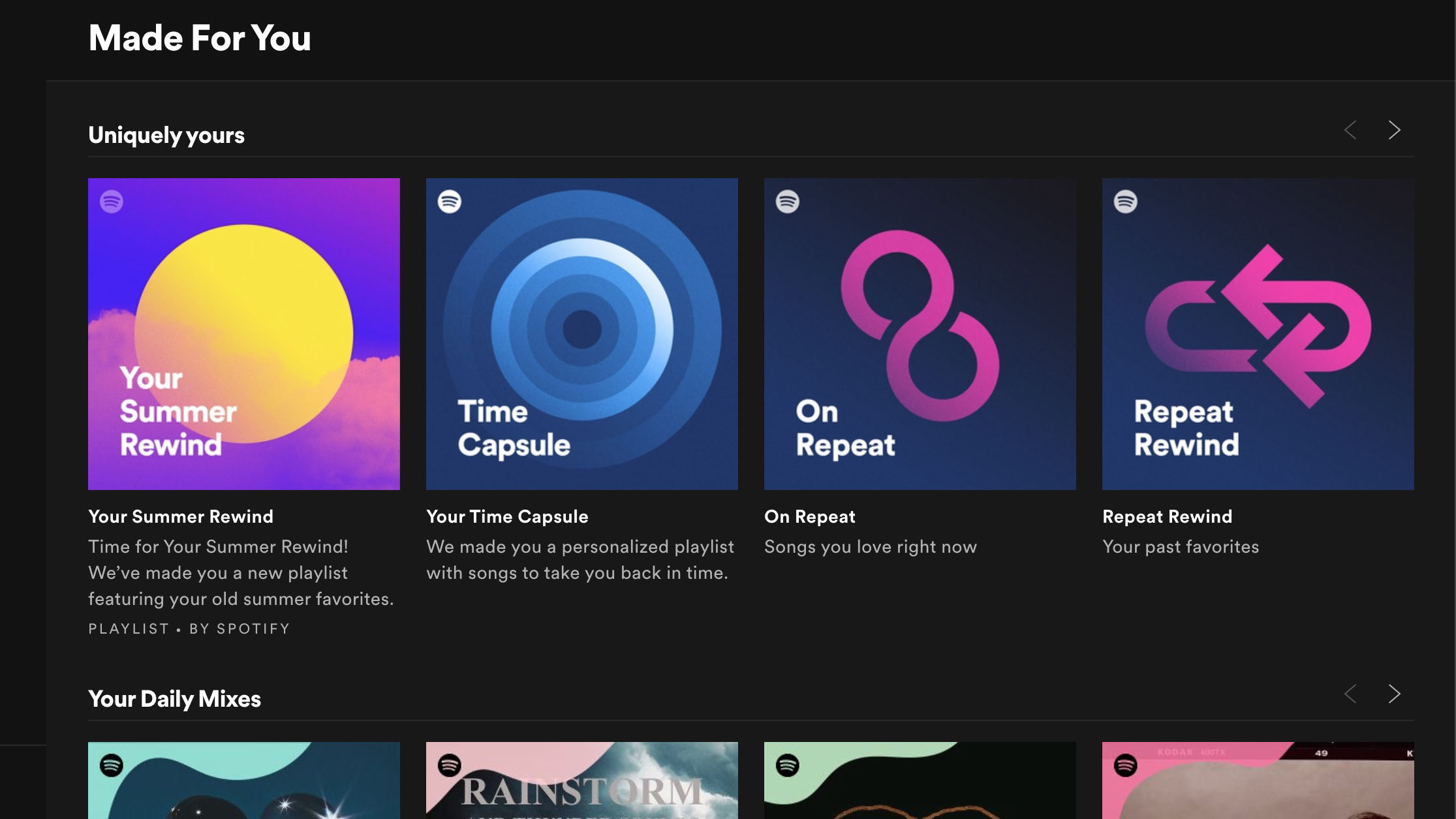
What’s it like to use?
Spotify has had its fair few updates over the years, but it’s hard to deny how well the current UI works. Unlike Apple Music, it’s a service that’s clearly been redesigned and tweaked with smaller screens in mind, thanks to the raft of options available on-screen at any one time. Whether you’re downloading an album or playlist to your phone or starting a radio channel based on an artist, it’s a consistently intuitive experience.
The tile system is small enough to make selecting new albums and playlists easy while packing in plenty of content into a timeline of content that’s ultimately curated to what you’ve been listening to and what you might want to jump into next. Spotify might have as many playlists as it does albums, but it’s a strategy that works as its algorithms tailor the app to each user.
Being able to work with multiple platforms is another huge asset. Working on almost any type of smartphone and tablet increases the scope for its audience. What’s more, the UIs for all these platforms are uniformly strong. Playing Spotify from your console – such as the version running on PS5 – is a massive tick for the service, as is the ease with which you set it up. Overall, Spotify is currently winning the UI war.
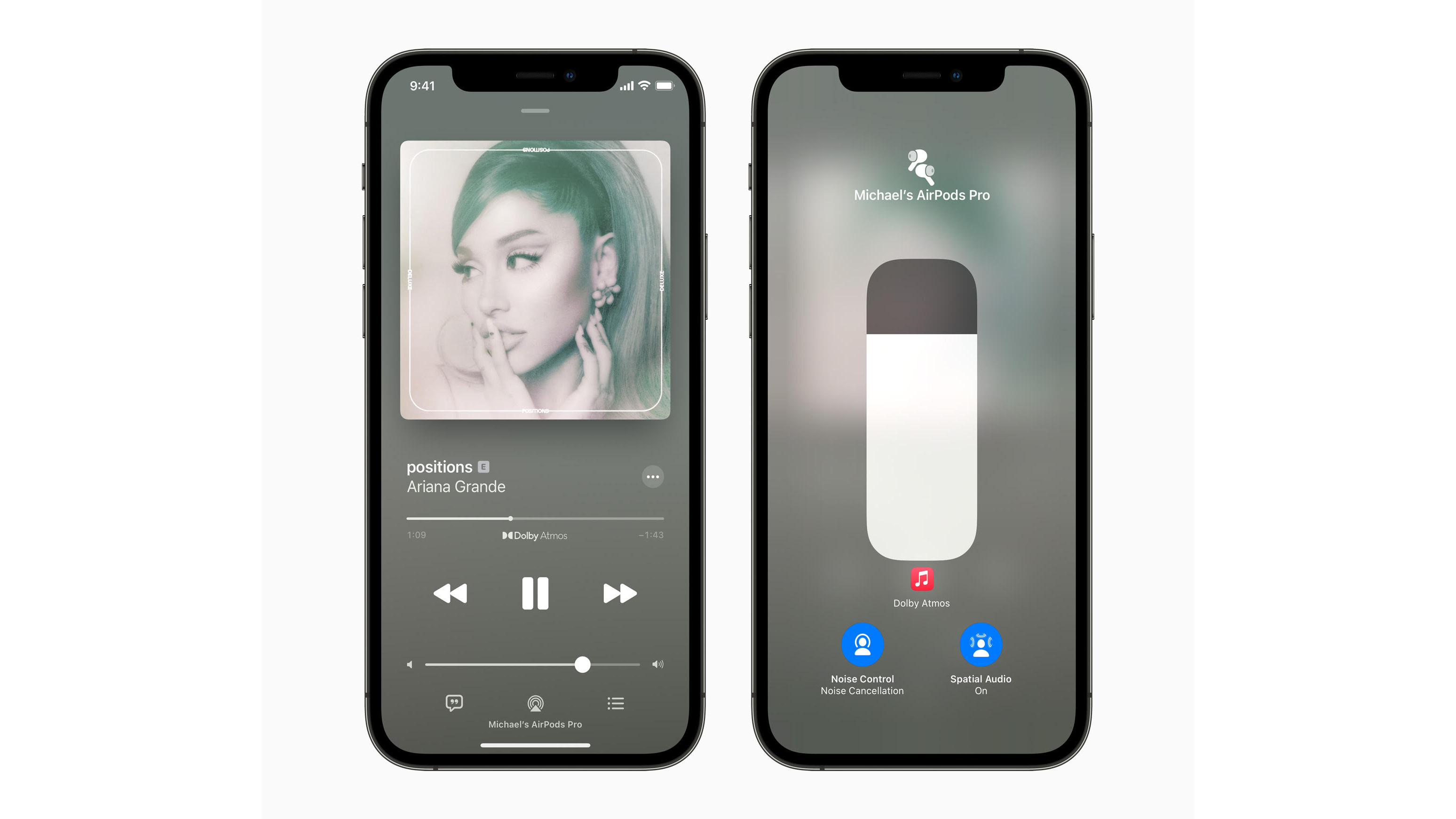
Verdict
Both services come with their pros and cons. Each one will suit a user looking for different things from a music streaming platform: Spotify offers a more well-rounded experience that’s effectively open to everyone. Its recommendations are fantastic, and it’s already got many users. However, its mobile experience is limited unless you’re willing to go Premium, and it needs to release its HiFi offering soon to stay ahead of the competition.
Apple’s three-month free trial does give you a great taste of its service. Recent Spatial Audio with Dolby Atmos and Lossless format upgrades are good news for audiophiles. This is bound to appeal to those who have already heavily bought into the ecosystem. However, its fiddly mobile design remains at odds with its impressive library and exclusive content.
As it stands, Spotify just about remains the stronger service overall, but Apple Music might not always remain in second place now it offers the same extensive library and an upgrade in music format quality.
Be sure to also read our Tidal review, as the audiophile-grade streaming service is now considered a solid contender to these two services and is a fantastic option if you're struggling to decide.